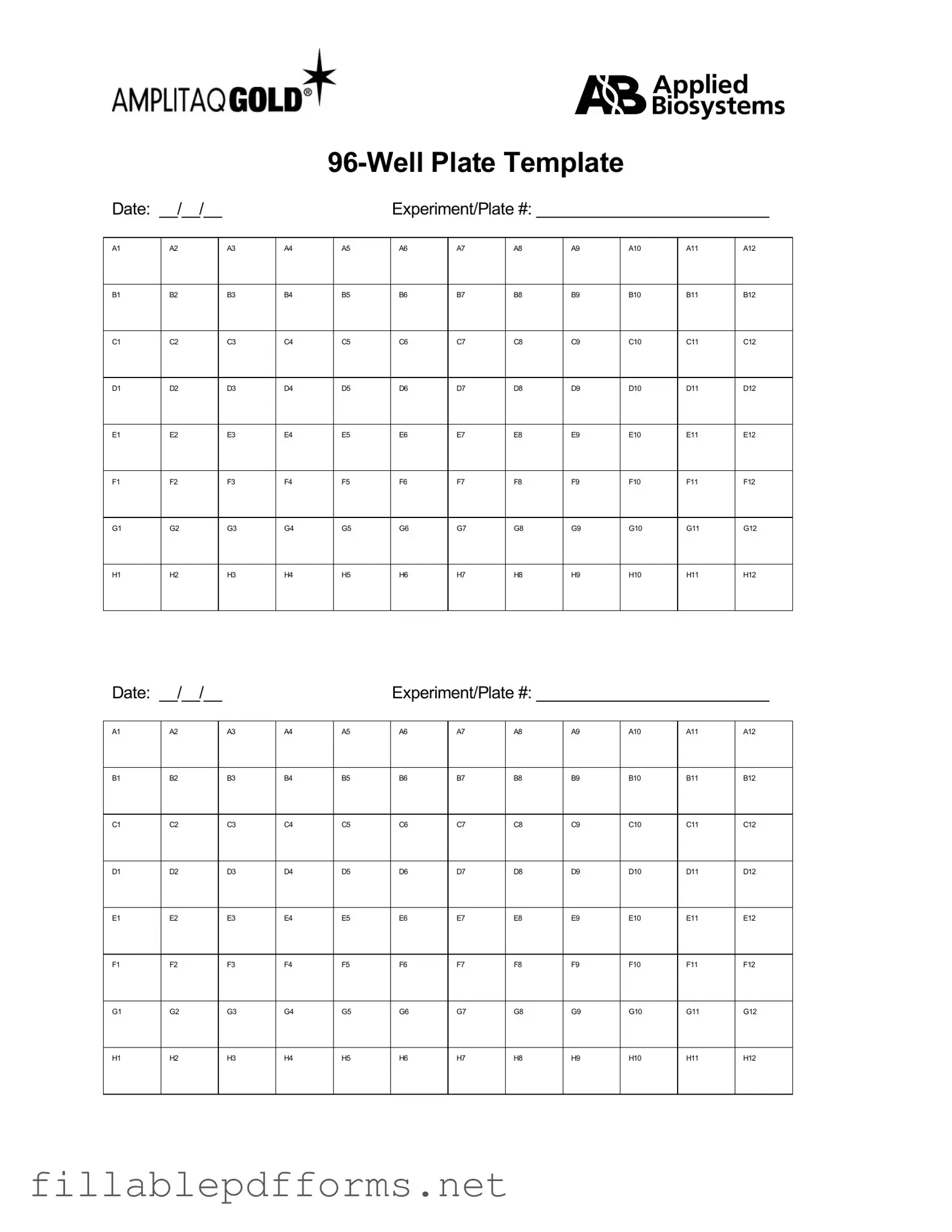The 96 Well form is an essential tool widely utilized in various scientific and research fields, particularly in biology and chemistry. This format allows researchers to conduct multiple experiments simultaneously, maximizing efficiency and minimizing resource use. Typically structured as a grid of 96 wells, each well can hold a small volume of liquid, making it ideal for high-throughput screening applications. The design facilitates the testing of numerous samples or conditions in parallel, which is invaluable for experiments such as drug discovery, enzyme assays, and genetic analyses. The versatility of the 96 Well form extends beyond its physical layout; it can accommodate various types of assays, including colorimetric, fluorescent, and luminescent tests. Additionally, the form is compatible with a range of laboratory equipment, such as plate readers and liquid handling systems, further enhancing its utility in modern laboratories. As the demand for rapid and reproducible results continues to grow, the significance of the 96 Well form in advancing scientific research cannot be overstated.
